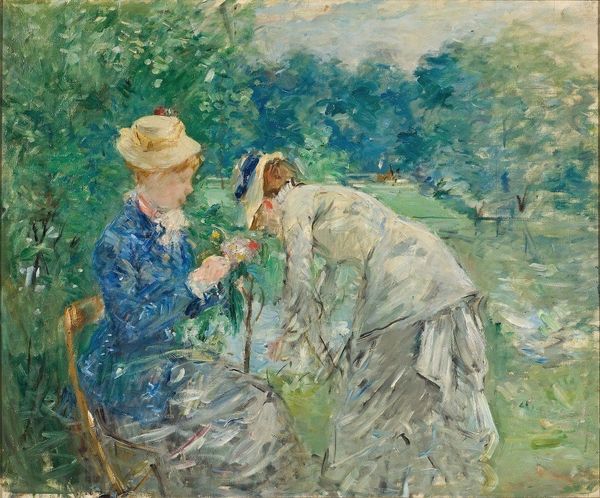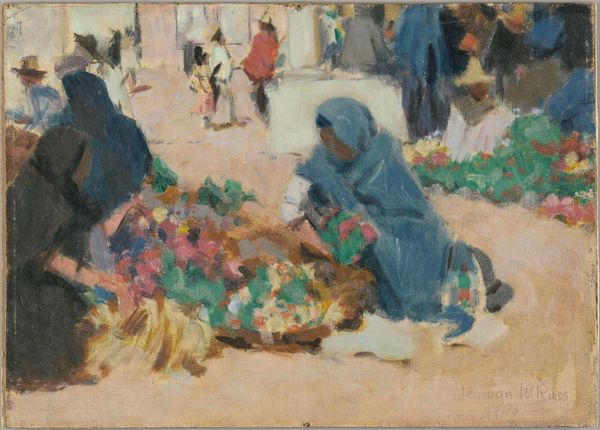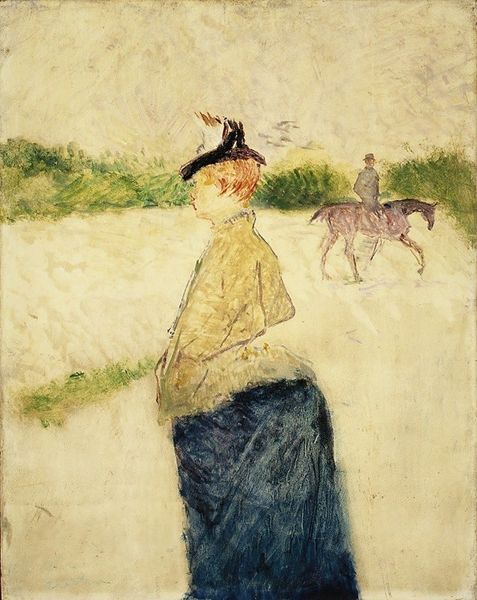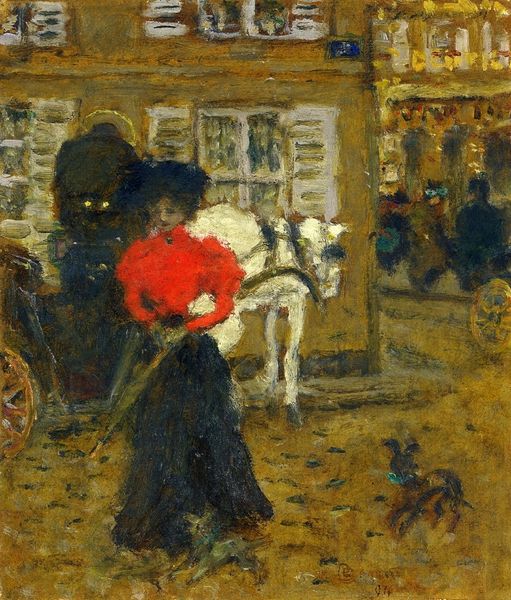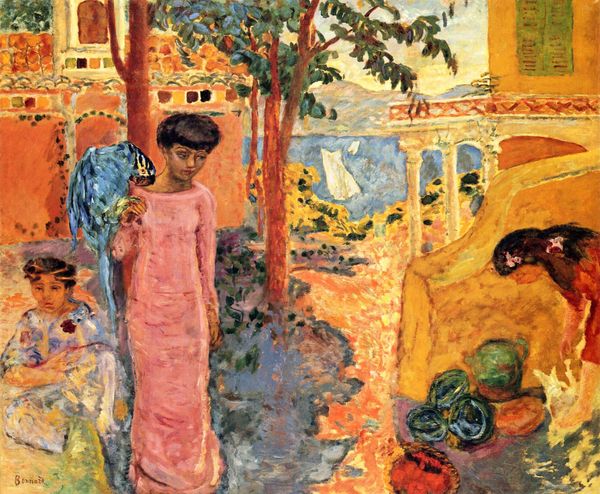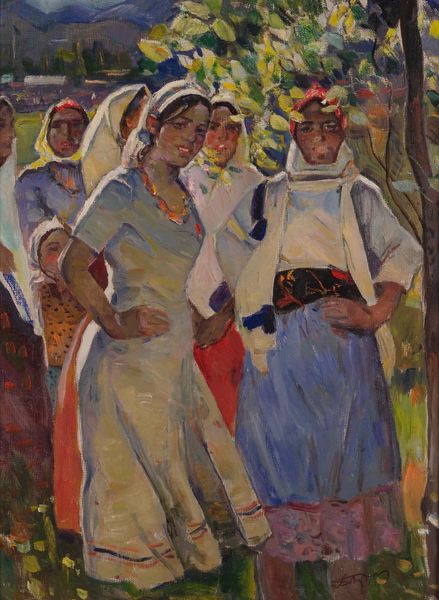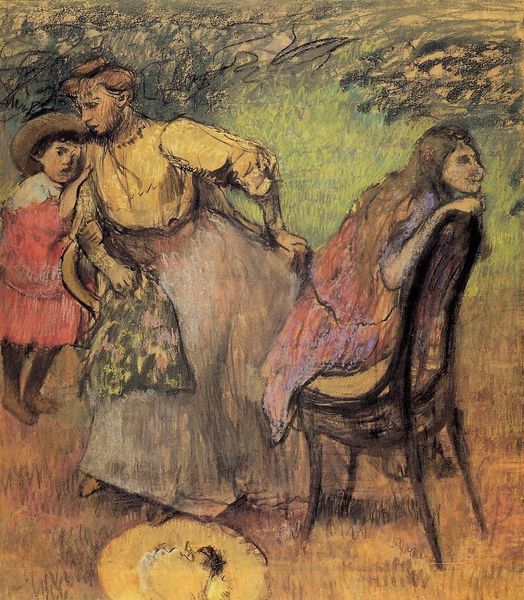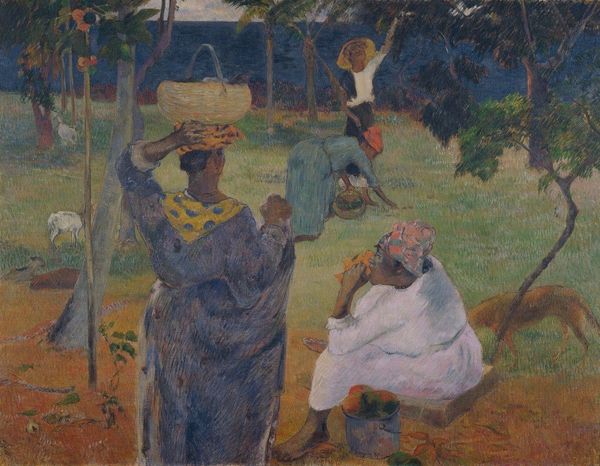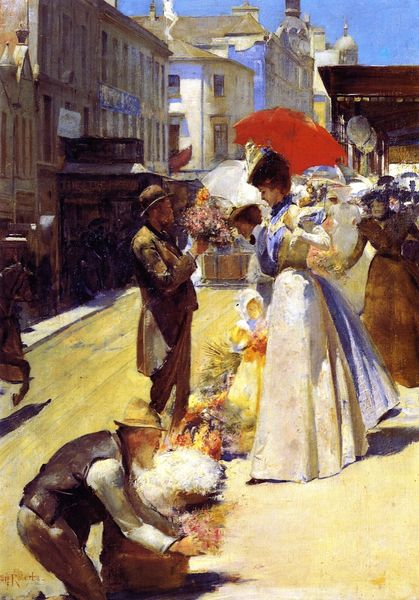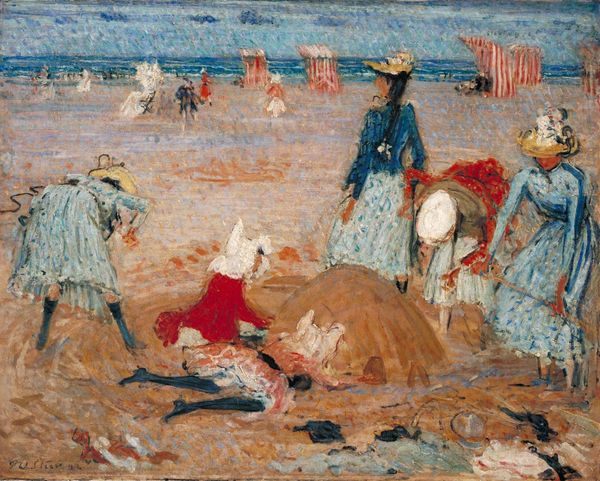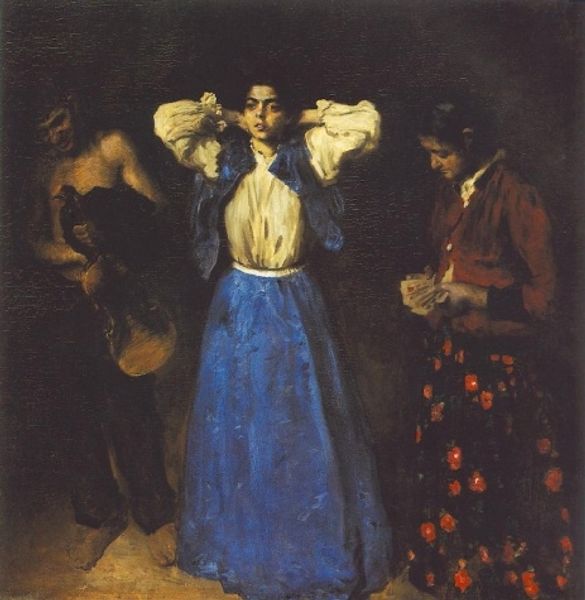
Copyright: Public Domain: Artvee
Editor: This is "Playing Croquet," painted by Leon Wyczółkowski between 1892 and 1895. The impressionistic brushstrokes and the vivid colors, especially the contrast between the red dress and the blue skirt, give it a wonderfully lively, almost theatrical quality. What stands out to you in terms of its cultural meaning or historical context? Curator: The figures certainly present a visual narrative beyond mere sport. Notice the women; they are symbols of leisure and perhaps societal expectations, codified by what they wear and what they are *doing*, their gestures so deliberate and positioned in contrast to each other, like actors on a stage. Do you feel that these colours and costumes communicate something specific about their identity and role within this social scene? Editor: That's interesting. The red dress seems bold, maybe even a little rebellious, compared to the softer hues of the other figures. Maybe it's a statement of individuality? Curator: It very well could be. Consider that red, throughout art history, is closely tied to royalty and high status. How would a 19th-century Polish audience react to the display of privilege amid the hardships experienced by commoners in divided Poland? Do you find any indicators in this artwork pointing to either acceptance of, or resistance to, the ruling class? The parasol, perhaps, suggests exclusivity and protection, hinting at social stratification. Editor: So, it's not just about a game; it's about social positioning and maybe even unspoken power dynamics? Curator: Precisely. Every visual element carries a symbolic weight. Reflect on how the setting itself, seemingly idyllic, can represent the enclosed and often restricted world of the upper class. Wyczółkowski invites us to contemplate how leisure, attire, and even the arrangement of figures symbolize societal values and unspoken hierarchies. Editor: That completely shifts my understanding! I went in thinking it was just a pleasant scene, but it's clearly layered with meaning. Curator: Art so often invites us to question surface appearances and uncover the deeper currents that shape our perceptions.
Comments
No comments
Be the first to comment and join the conversation on the ultimate creative platform.
